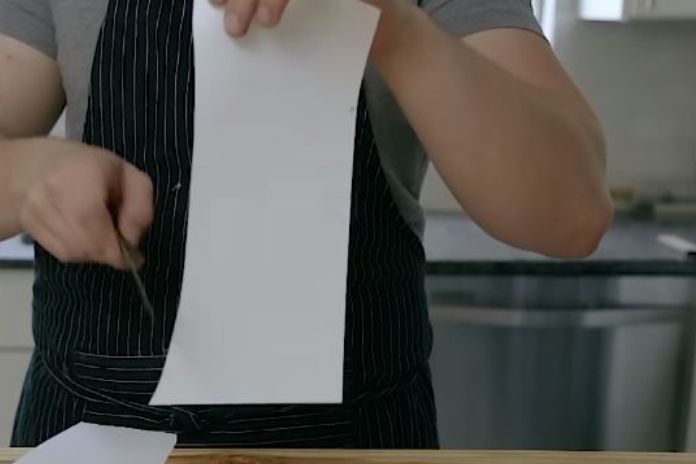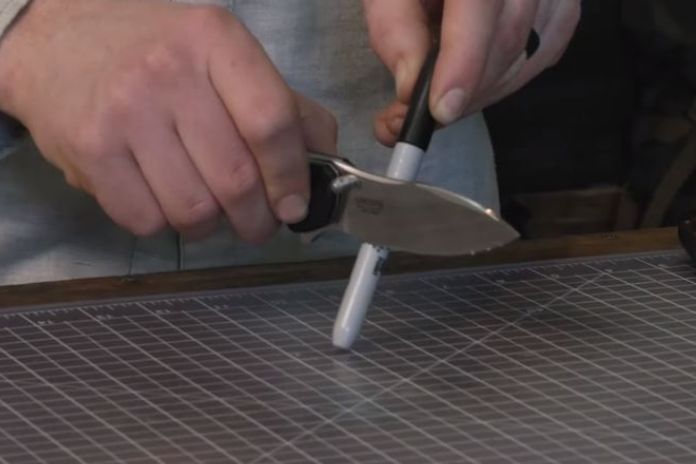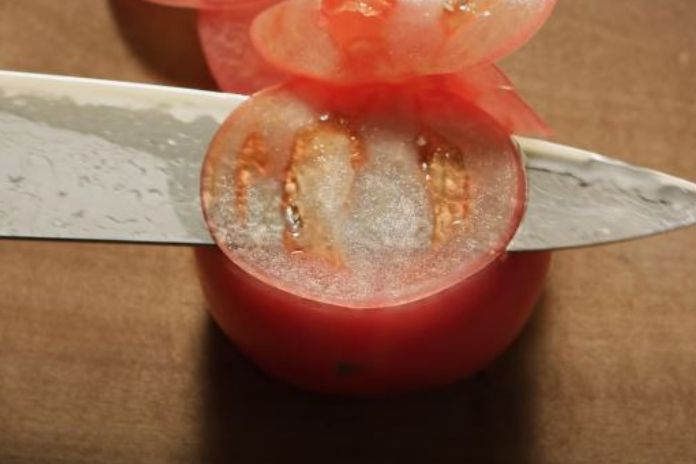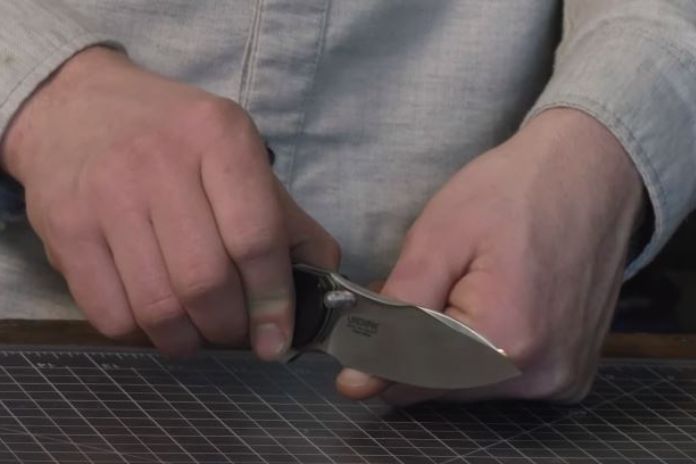Everyone loves to keep a sharp knife in their kitchen but doesn’t know how to test the sharpness. Every knife gets dull and loses the sharpness to cut meat and vegetables over time. Normally, chefs can easily judge the difference between dull and sharp knives with their experience.
It’s best routine to check the sharpness of your knife blade from time to time. We have listed many researched methods to test the knife’s blade sharpness. So, pick the suitable method and try your steel knife performance with safety measures.
Is It Risky to Use a Dull Knife?
Using a dull knife is not so dangerous, but it becomes more challenging to control while cutting meat. You may also cut your finger accidentally. If you are a chef, you need a sharp knife to cut anything smoothly.
You are having a sharp knife while on outdoor activities like camping, hunting, or gardening is recommended to cut any hard thing easily. You can make a precise cut and reduce the chance of slipping.
Factors Affecting Knife Sharpness
A sharp knife gives precise cut only with a clean blade, pointing line, and finely honed edge. Its sharpness depends on the following factors.
Blade Material: Blade material plays an essential role in the function and look of knives. Expensive kitchen knives use high-quality steel alloys to give a premium feel. Its composition and hardness determine the sharpness and the corrosion resistance.
The angle of Edge: Knives are designed with the best angle of edge to perform specific tasks. A knife with a < 20-degree angle can slice tomatoes and fruits precisely with a risk of edge damage. On the other hand, a knife with a < 20-degree angle is the best choice for butchers to cut deer meat and chop hard things.
Methods for Testing Knife Sharpness
1- Visual Inspection of the Blade
Chefs have a great experience of using knives, and they can check the sharpness of knife blades with visual inspection. You can also check and judge the sharpness of the blade by following the steps:
First, check for any nicks, chips, or visible damage on the blade. These nicks and chips occur due to hitting on the hard surface or lack of cutting techniques.
Second, focus on the knife surface to inspect its knife. Carefully run your finger on the edge of the knife to feel its smoothness. A knife with a smooth edge gives you precise cutting and speed to slice vegetables. If you find any rough point on the edge, then it can impact your cutting performance.
Lastly, look on the knife’s cutting edge to inspect signs of wear or unevenness. A sharp edge has a smooth and shiny surface without any spots. If you notice a spot or stain, it may cause rusting on the knife.
Rusting needs proper maintenance to recover its sharpness.
2- Cutting Paper
Cutting paper is the most common and safe method to test the sharp edge of a knife blade. Hold a standard paper like A4 size and slice it with a knife. A sharp knife will slice down it smoothly; otherwise, it catches on the paper and tears it. You don’t need to apply force while doing a paper-cutting experiment.
This is to check the sharp edges. You can also try this on another piece of paper like a newspaper, magazine, or phonebook diary (if you have one). A dull knife with rusty spots can’t cut a paper smoothly.

3- Cutting the Hair on Your Arm
Many people suggest cutting hair on the arm to check the knife’s performance. This is risky and needs attention. Hold your knife carefully and cut the hairs on your skin without touching it. If your knife is sharp, it will slice hair without pulling or tugging.
This is not recommended if you are going to test a lot of knives at the same time. You may lose your concentration and can harm yourself.
4- Ballpoint Pen Barrel Test
Ballpoint is another option for testing blade sharpness. Take a ballpoint and place your knife edge at an angle of 45 degrees without applying extra pressure. A sharp knife should easily bite into the plastic ballpoint and slice it. If your knife edges are damaged, additional force will be required to cut them. Don’t try to apply force while testing on the ballpoint; it may accidentally cut your finger under the ballpoint.

5- Tomato Test
A tomato test is the best option instead of wasting a paper piece. I recommend the tomato test as it’s cheap and available in your kitchen. Take a fresh tomato to see how it bites and penetrates to slice it down. You can feel the exact way you want to cut vegetables with a kitchen knife. If it takes time to cut a tomato, then your knife is dull and needs maintenance. You can sharpen your knife with a whetstone or electric sharpener.

6- Nail Test
Girls can try this nail test as they have long nails. This test also needs focus and attention while putting a knife on your fingernail or thumbnail. As nails are a little harder than paper and tomato, a sharp knife can also catch a little bit.
7- Thumb Test
The thumb test is the fastest and most reliable for expert chefs. After four years of sharpening knives, I usually assess sharpness by lightly touching the edge and feeling how it grabs my fingerprint. You can also check by putting your thumb or finger across the blade edge and pulling away gently. A sharp knife will give you a sharp and tacky feel when sliding. If you feel smooth and have a little bit of resistance to invisible spots, then your blade is dull and needs sharpening.

Be careful while doing the test with any part of your body.
What do you do if your knife is dull?
Suppose you tested all the given methods and found your knife dull. It would be best if you sharpened your kitchen knives with a sharpener or anything that can smooth the knife edge.
There are two ways of sharpening knives: manual & automatic. In the manual, you can use whetstones, steel rods, sandpaper, etc. It may create scratches on the edges if you’re not doing it at the best sharpening angle. An automatic, electric sharpener is the best option for sharpening a knife. It is, somehow, more costly than manual methods.
Usually, I sharpen my steel knives using a 1000/3000 grit whetstone and test their sharpness by cutting a folded paper or vegetable. The second choice is diamond stone as a manual to sharpen a knife. WÜSTHOF Easy Edge is the best user-friendly electric sharpener for me. It provides stages for sharpening, shaping, and refining with non-slippery bottom.
Pro Tips
- Follow the instructions when testing knife sharpness
- Avoid improper cutting techniques to damage knives
- Store properly after using knives
- Consistency in sharpening technique is important
- Regular maintenance helps prolong knife sharpness
- Consider professional sharpening services for optimal results
FAQs
Is it bad to shave with a knife?
No, it’s not bad to shave with a knife. If you are a hunter and outdoor activity lover, you can shave with a sharp survival knife instead of a razer.
Does a sharp knife cut hurt?
Yes, a dull knife, with effort, can hurt you more than a sharp one. Its damaged edges will hurt badly.